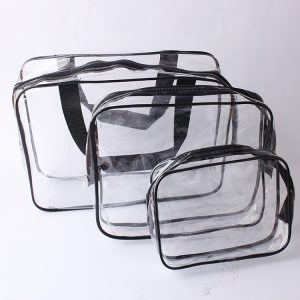The users of plastic bags are spread all over China and abroad, and it can be said that regardless of whether they are used by wholesale or retail customers, they have been scattered to various items in each place. Among them, food packaging bags have the highest usage rate. The quality of food packaging bags can directly affect people’s health. Therefore, food packaging bags must meet certain practical requirements in order to be used in a wider range. So, what practical requirements should food packaging bags meet?
1. Protect the appearance and quality of food and produce certain economic benefits. During the entire circulation process, food has to go through handling, loading and unloading, transportation and storage, which can easily cause damage to the appearance and quality of the food. After the food is packaged inside and outside, it can be very good. Protect food to avoid damage.
2. Protect the original quality of food and extend the shelf life of food. During the entire circulation process, the quality of food will change and deteriorate. The food itself has certain nutrients and moisture, which are the basic conditions for the production and reproduction of bacteria, mold, yeast, etc. When the food is stored at a temperature suitable for their reproduction, it will cause the food to spoil and deteriorate. If the food is aseptically packaged or processed by high temperature sterilization and refrigeration after packaging, it will prevent the occurrence of food spoilage and extend the shelf life of the food. At the same time, the food itself has a certain amount of water, and when the content of these water changes, it will cause the change or deterioration of the food flavor. If the corresponding moisture-proof packaging technology is adopted, the above phenomenon can be prevented, and the shelf life of the food can be effectively prolonged. Moreover, when the food is in circulation, when it is directly exposed to sunlight and light, and at high temperatures, it is easy to use Food oxidation, discoloration, and taste changes, such as the use of corresponding vacuum packaging, air-filled packaging and other technologies and corresponding packaging materials. It can also effectively extend the shelf life of packaged foods.
3. Packaged food is convenient for circulation. Some packaging is a container for food circulation. Such as bottled alcohol, beverages, canned food, milk powder in the field, etc., these packaged bottles, cans and bags are not only packaging containers, but also transfer tools for food circulation and sales. It brings great convenience to food circulation.
4. Increase the variety of convenience foods that are convenient for consumers and have local flavors. They can only be circulated after being packaged. The famous and high-quality foods from all over the country can be exchanged and people’s daily food varieties can be increased. Furthermore, fresh foods, such as quick-frozen dumplings, packaged meals and preservation techniques, can be convenient for people to eat.
5. Prevent food contamination. Convenient cooking food. Special packaging technology should be used when the food is in contact with the container and human hands. It is easy to contaminate the food. The packaged food can avoid this phenomenon, which is beneficial The health of consumers.
6. Promote the rationality and planning of food circulation. Some fresh foods are perishable and difficult to transport, such as fruits and aquatic products. Various cans are made in the place of production, which can reduce waste and reduce transportation costs. And can promote the rationality and planning of food circulation.








